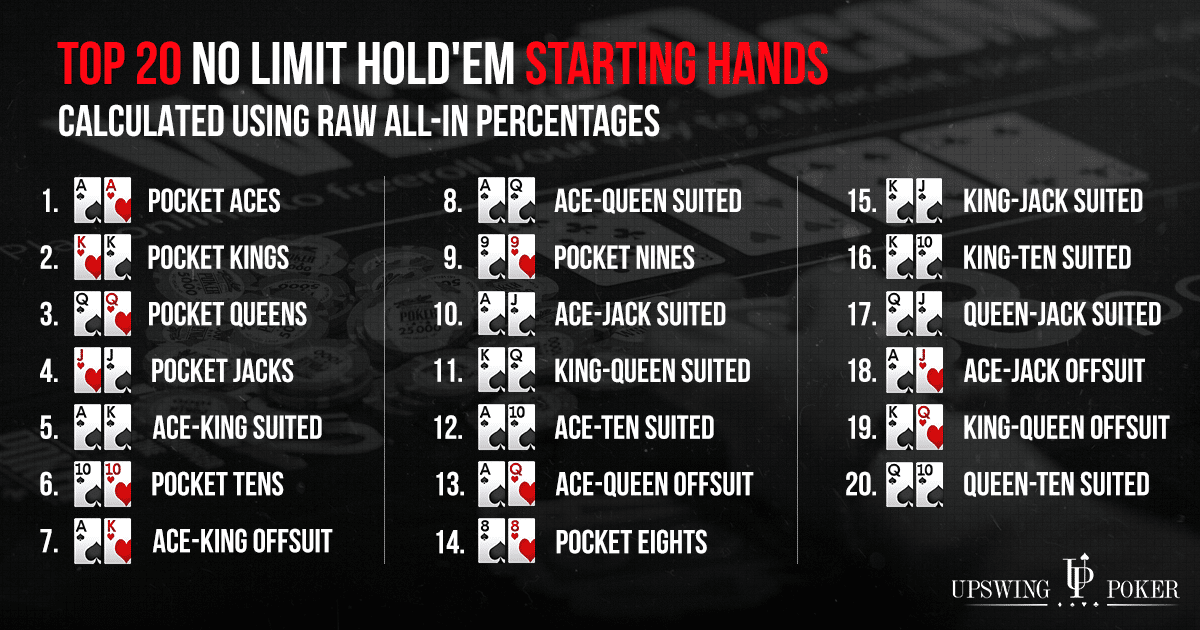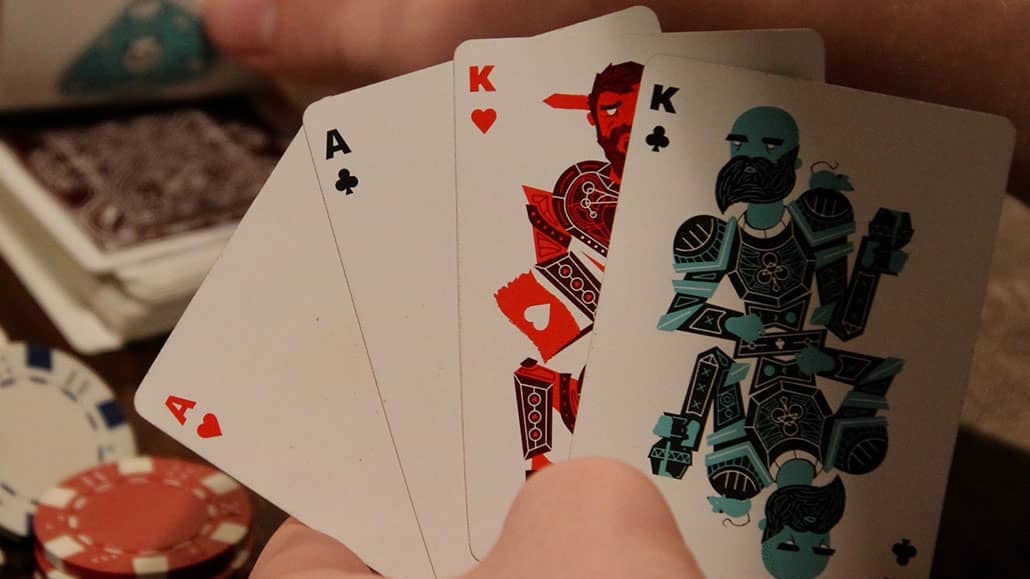Omaha Poker Hands Value
Omaha Hi Lo (also known as Omaha 8 or Omaha Eight or Better) is a “split pot” version of the popular Omaha poker game. In this version of the game, there are two winning hands in each round: the high winner and the low winner.
The Hands in Omaha Poker. The lack of information can lead to wrongful assumptions and push you to take risks that are not justified by the value of the cards you hold. Below you will find a list of poker hands in order from highest to lowest to help you get started, as well as the top starting hands for Texas Hold'em. Click the button on the right to get a cheat sheet that displays the traditional poker hand rankings, which are used in the most popular variants of poker (such as Texas Hold‘em).
Omaha Poker Hands Value Guide
The high hand winner is the player with the highest value winning hand – the same as in the standard version of Omaha. The low hand winner is the player with the best hand featuring five unpaired cards valued 8 or lower. Flushes and straights are ignored in the low hand. If you know the basics of Pot Limit Omaha Hi strategy, you should have no problems getting to grips with Omaha Hi Lo strategy, so here are some tips to get you started.
Be prepared to fold on the flop
An essential Omaha 8 strategy is to recognize when you have a weak hand early on and get out quickly. The game favors the highest value hands so if the flop offers you little, it’s time to fold. Betting on average hands is a flawed Omaha Eight or Better strategy that will quickly end your game.
Forget about bluffing
If you are planning on bringing your Texas Hold’em bluffing skills to the Omaha Hi Lo table, think again. The game is driven by strong hands so when the betting starts, the chances are you are going up against players with high-value combinations. Bluffing in this situation is a sure-fire way to get beat. There are some Omaha Hi Lo strategy advanced situations where bluffing may be useful, but it takes time and experience to understand such nuances of the game. Until you reach that point, bet the hand you have.
Don’t commit too early

If you are dealt a strong early hand such as A-A-2-3 double-suited, don’t be tempted to raise early. You will reduce the field while committing a lot of money before you have seen the flop. It’s much better to keep as many players in the game as possible if you have the potential to hit the “nuts”. Some players may raise early if they have a good but not strong hand to try and force other players to fold but this strategy can backfire after the flop.
Remember, the key decision you need make after being dealt with your hole cards is whether to play your hand or not. If you have a premium hand, you should play but avoid raising until after the flop when there is a multi-way pot there to be scooped.
Omaha Hi Lo 8b Strategy
- How To Play Omaha Hi-Lo Split 8-or Better — Clear And Concise Guide – The Rules Of How To Play Omaha Hi-Lo.
- Omaha Hi-Lo Starting Hands Guide — Starting Hands Guide For Omaha Hi-Lo 8 or Better and PLO8
- PLO8 Poker – Ace-Two Errors & How To Spot Them — Every PLO8 Player Enjoys The Sight Of A2 As Part Of Their Starting Hand, However There Are Times When A2 Errors Can End Up Costing You Chips.
- Omaha Hi-Lo Point Count Systems For Starting Hand Selection — Dr Hutchinson’s Omaha Hi-Lo Point Count System Reviewed – Useful For Online Play??
- High Only Hands In PLO8 Poker – For The 30% Of The Time A Low Is Not Made, An Introduction To Profitable High-Hand Play.
- How To Avoid Being Quartered In O8 Poker – Avoiding Being Quartered In Certain Situations Can Make A Big Difference To Your Bankroll.
- Playing Static Flops In PLO8 – Cardrunners Coach Dan ‘CampFireWest’ Deppen takes us though some advanced strategy ideas.
- Omaha Hi-Lo Probability Math – How Often Will You Make A Low? — How Often Will You Make A Low For Different Starting Hands.
- All-Ins Pre-Flop In No Limit Omaha Hi-Lo — No-Limit Omaha Hi-Lo Strategy Should Include Defense Against The Constant All-In Overbets Pre Flop in NL08.
- Straights In Omaha Hi-Lo, A Closer Look! — Straights, Draws To Straights and When To Play Straights In Omaha Hi-Lo… A Closer Look!
- Omaha Hi-Lo Probability Math – How Often Will You Make A Low? — How Often Will You Make A Low For Different Starting Hands.
- Scooping PLO Hi-Lo Pots – The Why And The How! — Lets take a look at taking the high and low splits of the pot in O8 games.
Omaha is a board game similar to hold’em in so far as there is a flop, a turn card, and a river card. Learning how to play Omaha is simple if you’re familiar with Texas hold’em. In this lesson we’ll frequently compare the differences between Omaha and Texas hold’em, so it’s assumed that you are familiar with the game.

In Omaha each player receives four starting cards versus just two in hold’em. Of these four cards two must be used with any three from the board to make your best five card poker hand. This is something that beginners often forget – and such rookie mistakes can prove expensive.
Here’s an example hand:
In this example there are four spades on the board and you are holding the . However you don’t have a flush since you must use two of your hole cards and three board cards to make your hand. This is different to hold’em, where a player is permitted to use both of their hole cards, only one, or none and just play the board.
A flush is only possible in Omaha if a player has two of that suit among his four cards. In this particular example the best Omaha hand you can make is; – which is one pair.
The fact that you must use two cards from your hand and three from the board in Omaha, means you can quickly see that being dealt four of a kind is really a very poor hand as you only have a pair and both your key outs are dead.
Omaha Strategy Tips
Receiving four cards and being forced to use two of them in your hand results in your hand having six possible variations. In a nine handed hold’em game there are nine possible hands competing for the pot. In a nine handed Omaha game there are actually fifty four possible hands lurking out there. This dynamic makes for several changes in your approach to playing winning Omaha versus hold‘em. Let’s review several of them:
Hand Values
The nut hand in Omaha is very often held by one of the players due to the aforementioned dynamic. This can be very treacherous for a newcomer to Omaha who is accustomed to playing hold’em. The nuts will be shown down much more frequently in Omaha. This means that your hand values need to go up or you are destined to become a donator. Knowing this is one thing but adhering to it is quite another. With six possible hand combinations, many players have difficulty getting away from marginal hands.

The famous American author and actor, Will Rogers, was fond of saying, “I never met a man I didn’t like”. Inexperienced Omaha players tend to say, “I never met a starting hand I didn’t like”. The best starting hands utilize all of their cards. An example would be – which is double suited. This way you would have two nut flush draws and two individual high pairs. You do not have two pair as you can only and must use two cards from your starting four with any three cards from the board.
Drawing Hands

With all players having six combinations in their starting four card hands, you can imagine that there are usually plenty of draws lurking about. As a rule of thumb you should usually abandon straight and flush draws that are not to the nuts. Drawing to the second nut draw in Omaha can be a very costly endeavour. While you may play somewhat looser pre flop based upon the multiple combinations of draws, once you are able to confirm that your draw is not to the nuts it should make you tighten up considerably. While discipline is a vital characteristic for playing all forms of poker well, Omaha demands restraint in order to be successful. Many players are unable to summon this level of dedication to purpose so Omaha can be profitable for the stronger willed among us.
Backdoor Draws
Again, due to the multiple variations in a four card starting hand you gain the benefit of additional outs. While multiple draws occur in hold’em they become almost common place in Omaha. This again is the reason that the best Omaha starting hands utilize all four cards. If half of your starting hand is useless, you are spotting your opponents too much edge.
Implied Odds
While implied odds are an important consideration in all forms of poker, the importance they hold in no-limit hold’em is far and away more critical than in Omaha. This is because the other players are aware that the nuts get hit more often and therefore become reluctant to pay them off. If you’ve become accustomed to using implied odds to bolster your drawing rationale in other forms of poker, temper their use in Omaha.
Omaha Poker Hand Rankings
Hand Reading
Reading opponents’ hands becomes a real challenge in Omaha due to the multiple combinations of each four card starting hand. My advice is to give your opponents more credit for hand values than you might in other forms of poker. This is true because there is less bluffing in Omaha since most players realize the nut hand is often out. Always being aware of what the current nut hand is will serve you well in Omaha.
These elements highlight the major differences between Omaha and hold’em and prepare you for understanding some key Omaha strategy concepts which will be outlined in our other lessons on Pokerology.com.
Related Lessons

Play Omaha Poker
By Tom 'TIME' Leonard
Tom has been writing about poker since 1994 and has played across the USA for over 40 years, playing every game in almost every card room in Atlantic City, California and Las Vegas.